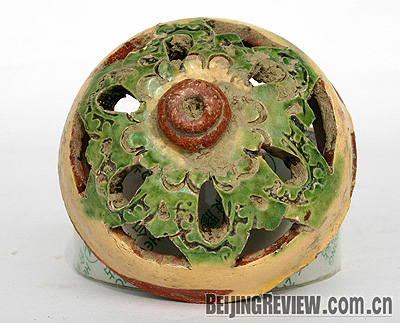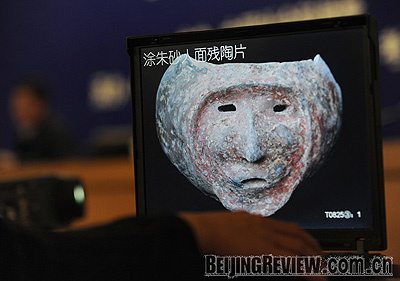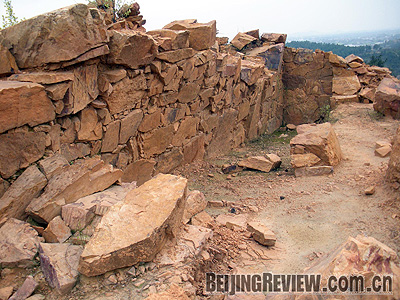|
"All the projects that were included in the top 10 are of great archaeological value and have significance in the development of the field," Xu said.
He said the new discoveries refer to those that have value in terms of academic study, in the development of archaeology and in the outcome of the study, adding that it does not simply mean a discovery that people have never seen before.
 |
|
EXQUISITE: A porcelain lid found at the site of the Tang and Song dynasties in Sichuan Province (SANG QING) |
 |
|
FACE WARE: A piece of a pottery found in the Yangguanzhai ruins in Shaanxi Province |
 |
|
PROTECTION: A section of the city rampart of the Spring and Autumn Period in Jiangsu Province |
The Shuangdun Tombs of the Spring and Autumn Period (770-476 B.C.) discovered in Bengbu, central China's Anhui Province was a great discovery, and the archaeological outcome surprised archaeologists and anthropologists. From these 2,600-year-old tombs experts found aspects of new civilization and architecture ruins that have never been seen before. The form, structure and relics are very complicated. The earth that was used to build the mausoleum was composed of soils of five different colors, and those soils were from different regions. The round-shaped grave pit has also never been seen before.
Xie Kelin, Director of the Bureau of Cultural Heritage of Bengbu, said at the media briefing that the tombs are the first round-shaped graves found in China and that they show many unknown aspects of Chinese civilization in terms of new culture and new interment methods. Besides this, they also helped archaeologists learn about a forgotten kingdom of Zhongli, in ancient China, Xie added.
Another graveyard of the Spring and Autumn Period in central China's Henan Province was also one of the top 10 selections of 2008. Ma Juncai, a researcher at the Institute of Archaeology and Cultural Relic Research of Henan Province, said at the media briefing that the mausoleum was confirmed as the tomb of an emperor from the third century B.C. The artifacts unearthed and the structure of the mausoleum filled in many blanks about this period, said Ma.
| 